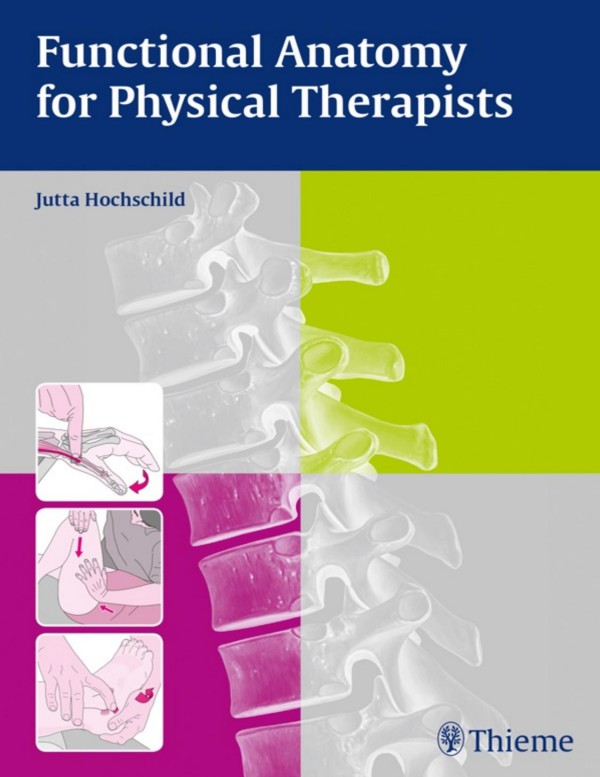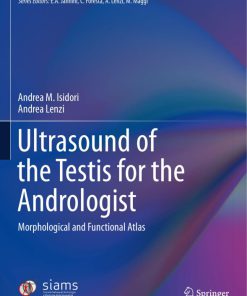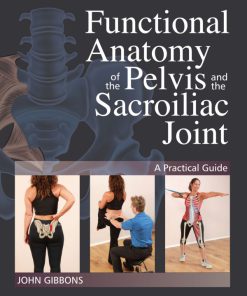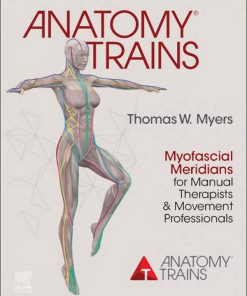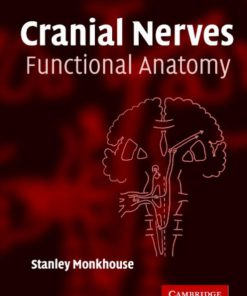Functional Anatomy for Physical Therapists 1st edition by Jutta Hochschild ISBN 3131768614 9783131768612
$50.00 Original price was: $50.00.$25.00Current price is: $25.00.
Authors:Jutta Hochschild , Series:Anatomy [149] , Tags:Medical; Anatomy & Physiology , Author sort:Hochschild, Jutta , Ids:9783131768612 , Languages:Languages:eng , Published:Published:Dec 2016 , Publisher:Georg Thieme Verlag , Comments:Comments:Functional Anatomy for Physical TherapistsThis is a good reference for anyone looking to delve deeper into the study of anatomy and human movement. The author has taught anatomy for more than 25 years, and the book reflects the author’s vast experience. — Doody’s Book Review (starred review)Effective examination and treatment in physical therapy rely on a solid understanding of the dynamics of the joints and the functions of the surrounding muscles. This concise instructional manual helps readers to not only memorize anatomy but also to truly comprehend the structures and functions of the whole body: the intervertebral disk, the cervical spine, the cranium, the thoracic spine, the thorax, the upper extremities, lumbar spine, pelvis and hip joint, and the lower extremities. Through precise descriptions, efficiently organized chapters, and beautiful illustrations, this book relates functional anatomy to therapy practice. It provides extensive coverage of the palpation of structures and references to pathology throughout.Highlights: Accurate and detailed descriptions of each joint structure in the body, including their vessels and nerves, and their functionComprehensive guidance on the palpation of individual structuresDetailed discussions on the functional aspects of muscles and joint surfaces, and the formation of jointsConcise tips and references to pathology to assist with everyday practiceMore than 1000 illustrations clearly depicting anatomy and the interconnections between structuresPhysical therapists will find Functional Anatomy for Physical Therapists invaluable to their study or practice. It makes functional anatomy easier for students to learn and is ideal for use in exam preparation. Experienced therapists will benefit from practical tips and guidance for applying and refining their techniques.
Functional Anatomy for Physical Therapists 1st edition by Jutta Hochschild – Ebook PDF Instant Download/Delivery. 3131768614, 978-3131768612
Full download Functional Anatomy for Physical Therapists 1st Edition after payment
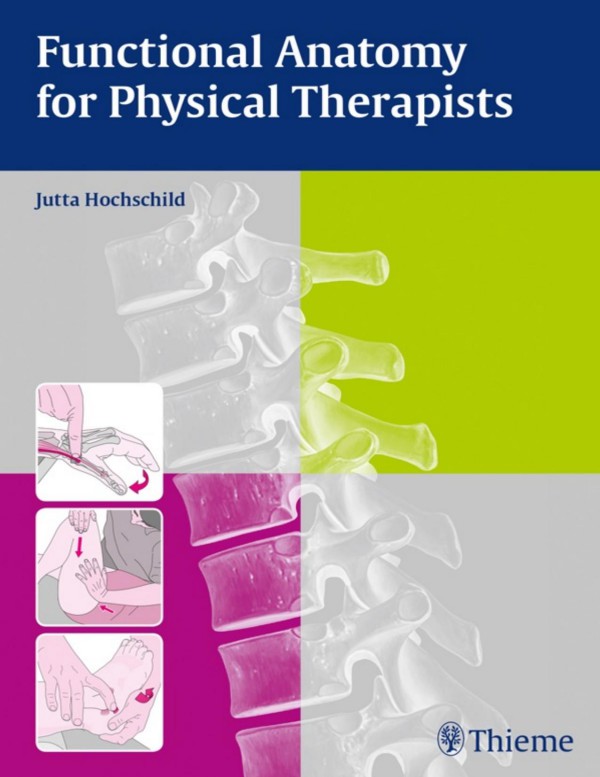
Product details:
ISBN 10: 3131768614
ISBN 13: 978-3131768612
Author: Jutta Hochschild
Functional Anatomy for Physical Therapists
This is a good reference for anyone looking to delve deeper into the study of anatomy and human movement. The author has taught anatomy for more than 25 years, and the book reflects the author’s vast experience. — Doody’s Book Review (starred review)
Effective examination and treatment in physical therapy rely on a solid understanding of the dynamics of the joints and the functions of the surrounding muscles. This concise instructional manual helps readers to not only memorize anatomy but also to truly comprehend the structures and functions of the whole body: the intervertebral disk, the cervical spine, the cranium, the thoracic spine, the thorax, the upper extremities, lumbar spine, pelvis and hip joint, and the lower extremities. Through precise descriptions, efficiently organized chapters, and beautiful illustrations, this book relates functional anatomy to therapy practice. It provides extensive coverage of the palpation of structures and references to pathology throughout.
Highlights:
- Accurate and detailed descriptions of each joint structure in the body, including their vessels and nerves, and their function
- Comprehensive guidance on the palpation of individual structures
- Detailed discussions on the functional aspects of muscles and joint surfaces, and the formation of joints
- Concise tips and references to pathology to assist with everyday practice
- More than 1000 illustrations clearly depicting anatomy and the interconnections between structures
Physical therapists will find Functional Anatomy for Physical Therapists invaluable to their study or practice. It makes functional anatomy easier for students to learn and is ideal for use in exam preparation. Experienced therapists will benefit from practical tips and guidance for applying and refining their techniques.
Functional Anatomy for Physical Therapists 1st Table of contents:
1. Fundamentals of the Spinal Column
- 1.1 Development and Structure of the Spinal Column
- 1.1.1 Ideal Curvature
- 1.1.2 Architecture of the Cancellous (Trabecular) Bone
- 1.2 Motion Segment
- 1.2.1 The Structure of a Vertebra
- 1.2.2 Zygapophysial Joints (Intervertebral Facet Joints)
- 1.2.3 Innervation of the Motion Segment
- 1.2.4 Ligaments of the Spinal Column
- 1.2.5 Intervertebral Disks
2. Cranium and Cervical Spine
- 2.1 Palpation of Landmarks on the Cranium (Skull) and Cervical Spine
- 2.2 Functional Anatomy of the Cranium
- 2.2.1 Bony Components
- 2.2.2 Meninges of the Brain
- 2.2.3 Cerebrospinal Fluid
- 2.2.4 Mobility of the Cranium (Skull)
- 2.2.5 Temporomandibular Joint
- 2.2.6 Jaw–Cervical Spine Functional Unit
- 2.2.7 Muscles of Mastication
- 2.2.8 Suprahyoid Muscles
- 2.2.9 Infrahyoid Muscles
- 2.2.10 Interaction between the Muscles of Mastication and the Suprahyoid and Infrahyoid Muscles
- 2.2.11 Muscles of the Calvaria (Epicranius Muscle)
- 2.2.12 Mimic Muscles
- 2.3 Functional Anatomy of the Cervical Spine
- 2.3.1 X-Ray of the Cervical Spine
- 2.3.2 Upper Cervical Spine
- 2.3.3 Lower Cervical Spine
- 2.3.4 Prevertebral Muscles
- 2.3.5 Posterior Neck Muscles
- 2.3.6 Brachial Plexus
3. Thoracic Spine and Thorax
- 3.1 Palpation of Landmarks of the Thoracic Spine and Thorax
- 3.2 Functional Anatomy of the Thoracic Spine
- 3.2.1 X-Ray of the Thoracic Spine
- 3.2.2 Thoracic Vertebra
- 3.2.3 Ligaments of the Thoracic Spine
- 3.2.4 Movements in the Thoracic Spine Area
- 3.3 Functional Anatomy of the Thorax
- 3.3.1 Movements of the Ribs
- 3.3.2 Muscles of the Thoracic Spine: Lateral Tract
- 3.3.3 Medial Tract
- 3.3.4 Muscles of Inspiration
- 3.3.5 Muscles of Exhalation
- 3.3.6 Muscles That Assist in Respiration
- 3.3.7 Course of the Nerves in the Thoracic Spine Region
4. Shoulder
- 4.1 Palpation of Landmarks in the Shoulder Area
- 4.2 Functional Anatomy of the Shoulder
- 4.2.1 X-Ray of the Shoulder
- 4.2.2 Range of Motion of the Arm: Participating Joints
- 4.2.3 Glenohumeral Joint
- 4.2.4 Subacromial Space
- 4.2.5 Scapulothoracic Gliding Plane
- 4.2.6 Muscles of the Scapula
- 4.2.7 Acromioclavicular Joint
- 4.2.8 Sternoclavicular Joint
- 4.3 Movements of the Arm
- 4.3.1 Movement: Abduction
- 4.3.2 Adduction
- 4.3.3 Extension
- 4.3.4 Flexion
- 4.3.5 Rotation
- 4.4 Course of the Nerves in the Shoulder Region
5. Elbow
- 5.1 Palpation of Landmarks in the Elbow Region
- 5.2 Functional Anatomy of the Elbow
- 5.2.1 X-Ray Image of the Elbow
- 5.2.2 Elbow Joint
- 5.2.3 Ligaments
- 5.2.4 Axes and Movements
- 5.2.5 Muscles: Flexors
- 5.2.6 Muscles: Extensors
- 5.2.7 Muscles: Pronators
- 5.2.8 Muscles: Supinators
- 5.3 Course of Nerves in the Elbow Region
6. Hand and Wrist
- 6.1 Palpation of Structures in the Hand and Wrist
- 6.1.1 Radial Side of the Hand and Wrist
- 6.1.2 Dorsum of the Hand and Wrist
- 6.1.3 Ulnar Side of the Hand and Wrist
- 6.1.4 Palmar Region
- 6.1.5 Phalanges
- 6.2 Functional Anatomy of the Hand and Wrist
- 6.2.1 X-Ray of the Hand and Wrist
- 6.2.2 Wrist Joint
- 6.2.3 Joint Capsules of the Hand, Wrist, and Finger Joints
- 6.2.4 Perfusion
- 6.2.5 Innervation
- 6.2.6 Ligaments
- 6.2.7 Carpal Tunnel
- 6.2.8 Guyon’s Canal
- 6.2.9 Axes and Movements
- 6.2.10 Muscles of the Wrist Joint: Extensors
- 6.2.11 Muscles of the Wrist Joint: Flexors
- 6.2.12 Muscles of the Wrist Joint: Radial Abductors
- 6.2.13 Muscles of the Wrist Joint: Ulnar Abductors
- 6.2.14 Joints of the Midhand Region
- 6.2.15 Finger Joints
- 6.2.16 Muscles of the Finger: Extensors
- 6.2.17 Muscles of the Finger: Flexors
- 6.2.18 Long Thumb Muscles
- 6.2.19 Short Thumb Muscles (Thenar Muscles)
- 6.2.20 Hypothenar Muscles
- 6.2.21 Palmaris Brevis Muscle
- 6.3 Course of Nerves in the Hand and Wrist Region
7. Lumbar Spine
- 7.1 Palpation of Landmarks in the Lumbar Spine and Abdominal Areas
- 7.2 X-Ray Image of the Lumbar Spine, Pelvis, and Hips
- 7.3 Lumbar Vertebrae
- 7.4 Ligaments of the Lumbar Spine
- 7.5 Circulation and Innervation
- 7.6 Lumbar Spine Movements
- 7.7 Muscles of the Lumbar Spine Region
- 7.8 Fascial Structures of the Torso
- 7.9 Cauda Equina
- 7.10 Lumbar Plexus
8. Pelvis and Hip Joint
- 8.1 Palpation of Landmarks in the Pelvic and Hip Region
- 8.1.1 Palpation in the Posterior Pelvic Area
- 8.1.2 Palpation in the Lateral Pelvic Area
- 8.1.3 Palpation in the Anterior Pelvic Area
- 8.2 X-Ray and CT Scan
- 8.2.1 Pelvis–Leg Overview (Anteroposterior View in the Standing Position)
- 8.2.2 Pelvis–Leg Overview (Lateral View in the Standing Position)
- 8.2.3 Lines and Angles to Determine Hip Dysplasia and Dislocation
- 8.2.4 Rippstein II View
- 8.2.5 Computed Tomography
- 8.3 Pelvic Ring
- 8.3.1 Bony Structure of the Pelvis
- 8.3.2 Pelvic Dimensions
- 8.3.3 Distribution of Forces
- 8.4 Sacro-Iliac Joint
- 8.4.1 Articular Surfaces
- 8.4.2 Joint Capsule
- 8.4.3 Ligaments
- 8.4.4 Vascular Supply
- 8.4.5 Innervation
- 8.4.6 Axes of Motion
- 8.4.7 Movements
- 8.4.8 Stabilizing Structures
- 8.4.9 Connection between the Sacrum and Cranium
- 8.5 Pubic Symphysis
- 8.5.1 Articular Surfaces
- 8.5.2 Axes of Motion and Movements
- 8.5.3 Ligaments
- 8.5.4 Stabilizing Muscles
- 8.6 Sacrococcygeal Joint
- 8.6.1 Articular Surfaces
- 8.6.2 Ligaments
- 8.6.3 Axes of Motion and Movements
- 8.6.4 Stabilizing Muscles
- 8.7 Hip Joint
- 8.7.1 Articular Surfaces
- 8.7.2 Joint Capsule
- 8.7.3 Ligaments
- 8.7.4 Arterial Supply
- 8.7.5 Innervation
- 8.7.6 Angles in the Femoral Region
- 8.7.7 Movements and Axes of Motion
- 8.7.8 Biomechanics
- 8.7.9 Stabilization of the Hip Joint
- 8.8 Muscles of the Pelvic and Hip Regions
- 8.8.1 Pelvic Diaphragm
- 8.8.2 Urogenital Diaphragm
- 8.8.3 Flexors of the Hip Joint
- 8.8.4 Extensors of the Hip Joint
- 8.8.5 Abductors of the Hip Joint
- 8.8.6 Adductors of the Hip Joint
- 8.8.7 External Rotators of the Hip Joint
- 8.8.8 Internal Rotators of the Hip Joint
- 8.9 Neural Structures in the Pelvis–Hip Area
- 8.9.1 Sacral Plexus
9. Knee
- 9.1 Palpation of Knee Structures
- 9.1.1 Palpation of Anterior Knee Structures
- 9.1.2 Palpation of Medial Knee Structures
- 9.1.3 Palpation of Lateral Knee Structures
- 9.1.4 Palpation of Posterior Knee Structures
- 9.2 X-Ray of the Knee
- 9.2.1 Anteroposterior View
- 9.2.2 Lateral View
- 9.2.3 Tangential View
- 9.3 Knee Joint
- 9.3.1 Bony Structure and Joint Surfaces
- 9.3.2 Joint Capsule
- 9.3.3 Central Functional Complex
- 9.3.4 Anterior Functional Complex
- 9.3.5 Medial Functional Complex
- 9.3.6 Lateral Functional Complex
- 9.3.7 Posterior Functional Complex
- 9.3.8 Vascular Supply
- 9.3.9 Innervation
- 9.3.10 Axes of Motion and Movements
- 9.3.11 Biomechanics
- 9.4 Neural Structures
- 9.4.1 Terminal Branches of the Sciatic Nerve
10. Foot and Ankle
- 10.1 Palpation of the Structures of the Foot and Ankle
- 10.1.1 Medial Region of the Foot and Ankle
- 10.1.2 Dorsum of the Foot
- 10.1.3 Lateral Region of the Foot and Ankle
- 10.1.4 Heel
- 10.1.5 Plantar Surface
- 10.2 X-Ray Image
- 10.2.1 Anteroposterior View
- 10.2.2 Lateral View
- 10.2.3 Dorsal-Plantar View
- 10.2.4 Stress Views
- 10.2.5 MRI
- 10.3 Ankle Joint (Talocrural Joint)
- 10.3.1 Bony Structures and Joint Surfaces
- 10.3.2 Architecture of Cancellous (Trabecular) Bone
- 10.3.3 Joint Capsule
- 10.3.4 Ligaments
- 10.3.5 Axes of Motion and Movements
- 10.4 Tibiofibular Joint
- 10.4.1 Bony Structures and Joint Surfaces of the Tibiofibular Syndesmosis
- 10.4.2 Ligaments of the Tibiofibular Syndesmosis
- 10.4.3 Interosseous Membrane of the Leg
- 10.4.4 Bony Structures and Joint Surfaces of the Superior Tibiofibular Joint
- 10.4.5 Joint Capsule of the Superior Tibiofibular Joint
- 10.4.6 Ligaments of the Superior Tibiofibular Joint
- 10.4.7 Axis of the Superior Tibiofibular Joint
- 10.4.8 Mechanics of the Tibiofibular Connections
- 10.5 Talotarsal Joint
- 10.5.1 Bony Structures and Joint Surfaces of the Subtalar Joint
- 10.5.2 Bony Structures and Joint Surfaces of the Talocalcaneonavicular Joint
- 10.5.3 Ligaments of the Subtalar Joint
- 10.5.4 Movements of the Subtalar Joint
- 10.5.5 Muscles That Act on the Subtalar Joint
- 10.6 Tarsometatarsal Joint
- 10.6.1 Bony Structures and Joint Surfaces
- 10.6.2 Ligaments
- 10.6.3 Movements and Axes
- 10.6.4 Muscles
- 10.7 Metatarsophalangeal Joint
- 10.7.1 Bony Structures and Joint Surfaces
- 10.7.2 Ligaments
- 10.7.3 Axes of Motion
- 10.7.4 Muscles
- 10.8 Phalangeal Joints
- 10.8.1 Bony Structures and Joint Surfaces
- 10.8.2 Ligaments
- 10.8.3 Muscles
- 10.9 Muscles of the Foot
- 10.9.1 Extrinsic Muscles
- 10.9.2 Intrinsic Muscles
- 10.9.3 Functional Groupings
- 10.10 Course of Nerves in the Foot and Ankle Region
People also search for Functional Anatomy for Physical Therapists 1st:
what is functional physical therapy
functional physical therapy exercises
anatomy for physical therapists
body structures and functions physical therapy
best anatomy book for physical therapists
You may also like…
eBook PDF
Cranial Nerves Functional Anatomy 1st Edition by Stanley Monkhouse ISBN 1505392543 9780521615372
eBook EPUB
Functional Programming in JavaScript 1st Edition by Dan Mantyla ISBN 1784398225 9781784398224

